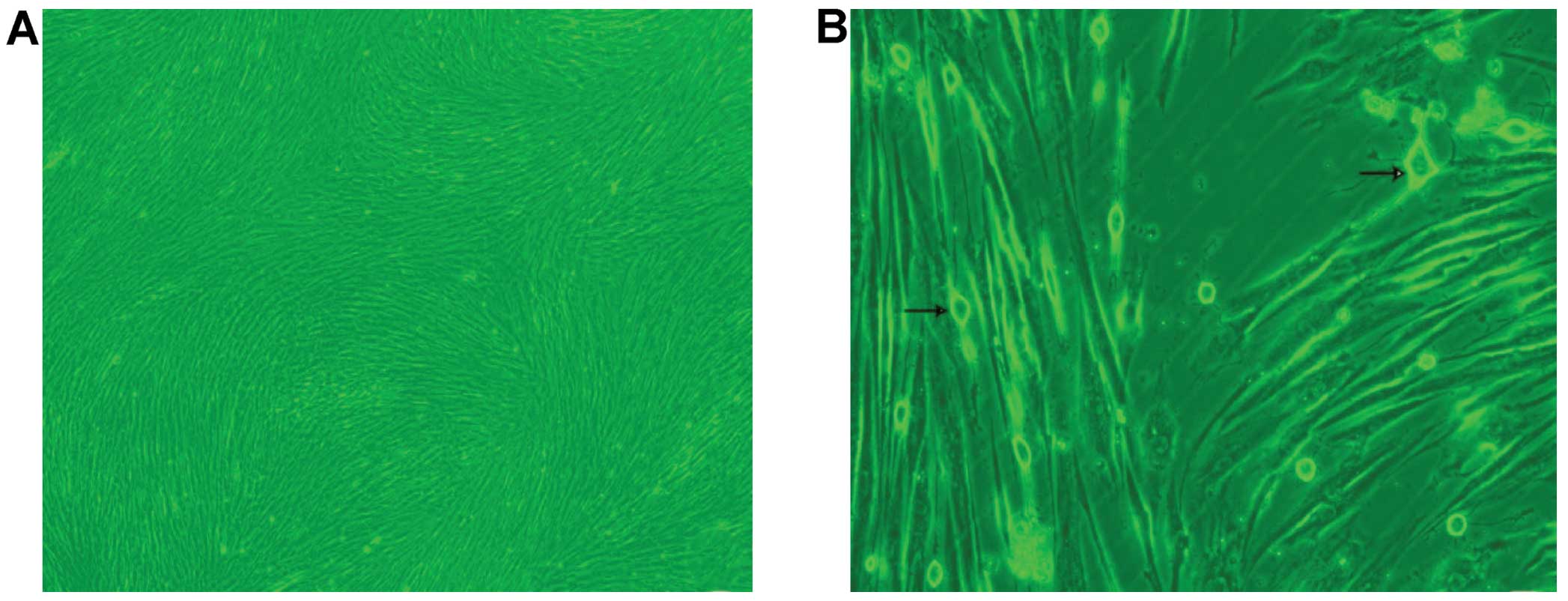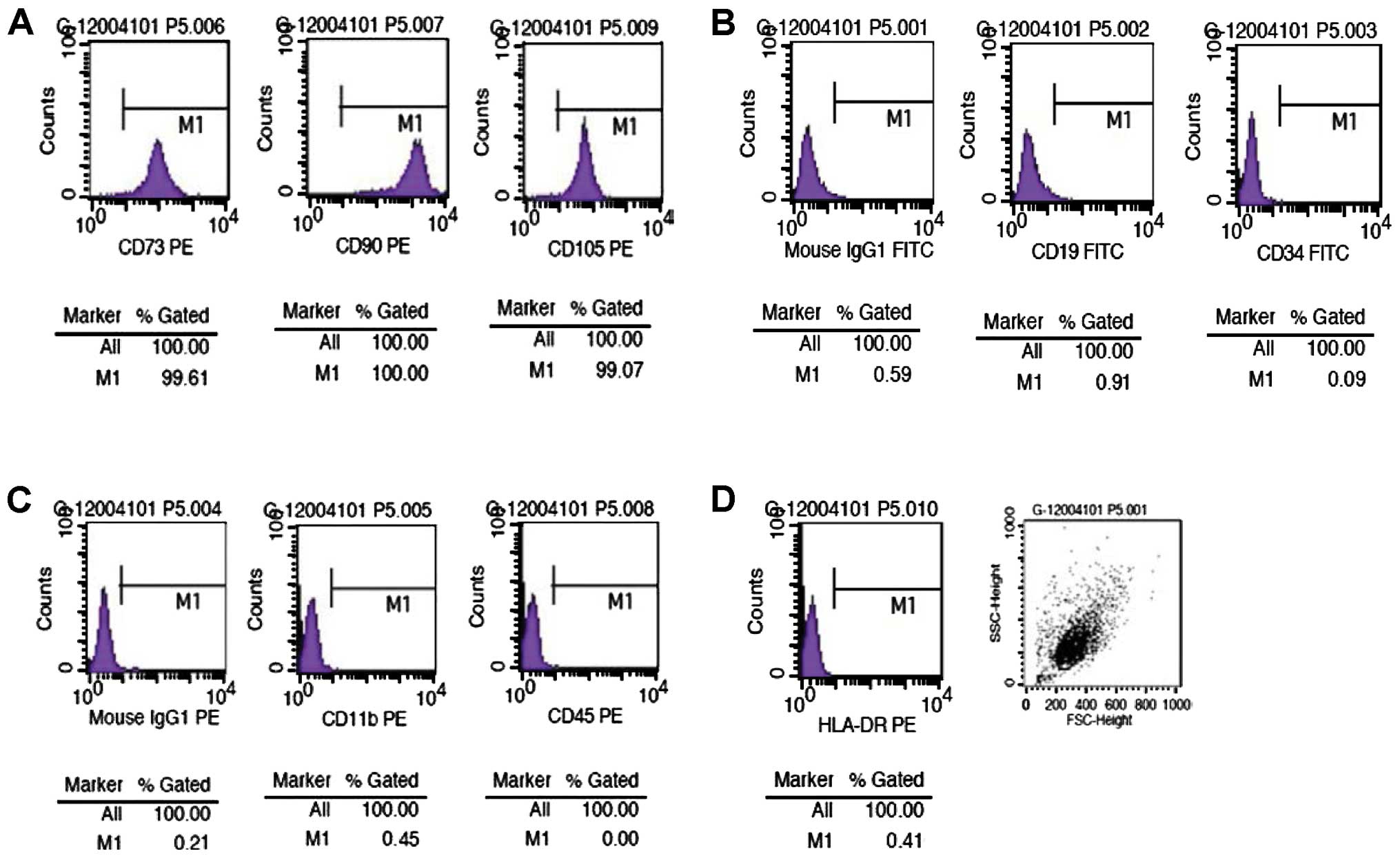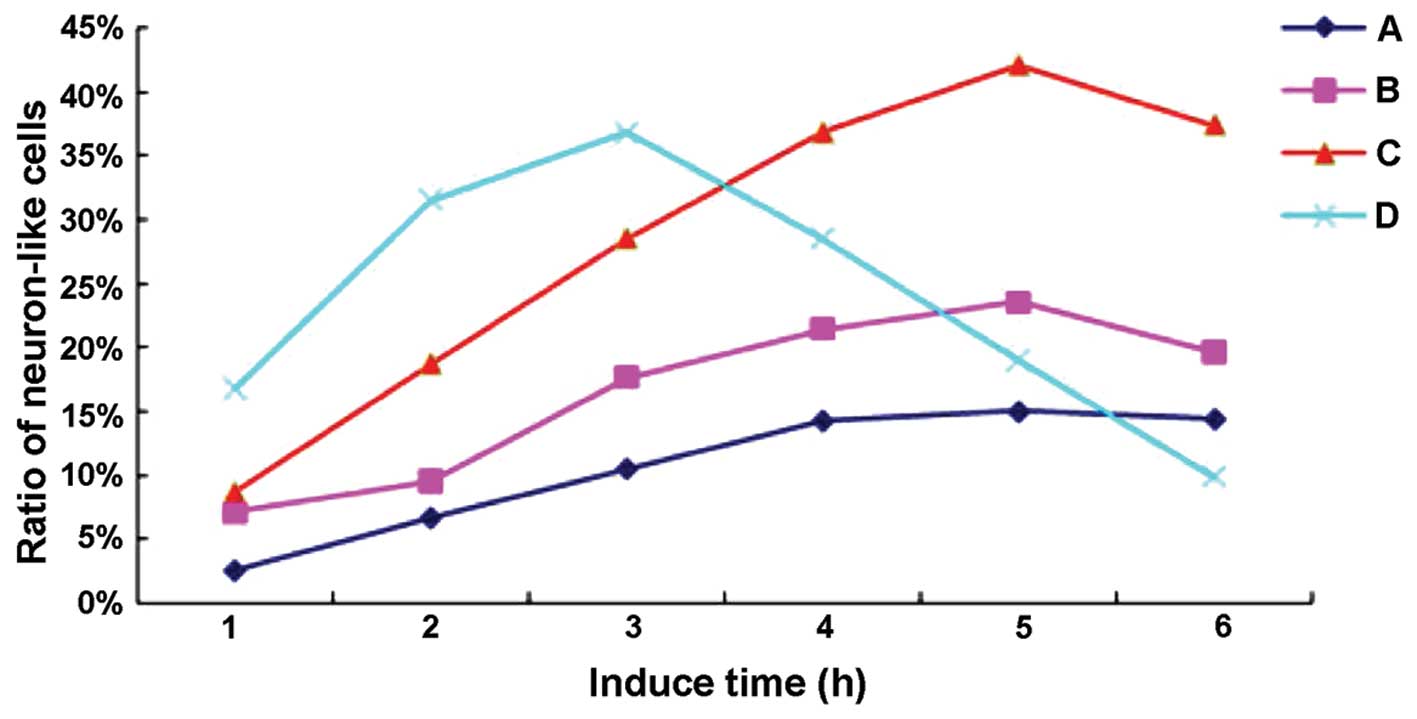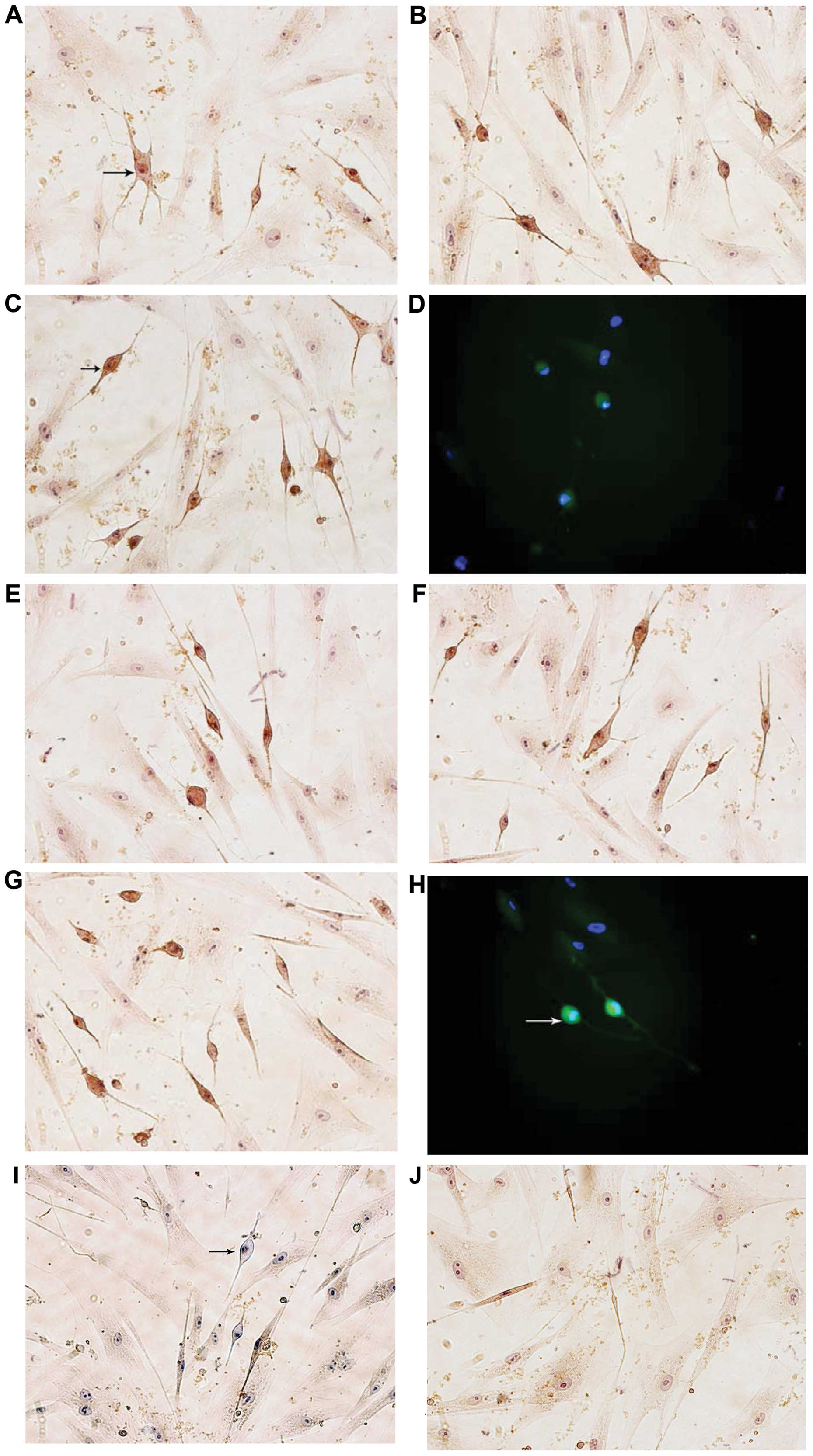Monosialoteterahexosyl ganglioside induces the differentiation of human umbilical cord-derived mesenchymal stem cells into neuron-like cells
- Authors:
- Published online on: August 10, 2015 https://doi.org/10.3892/ijmm.2015.2307
- Pages: 1057-1062
-
Copyright: © Nan et al. This is an open access article distributed under the terms of Creative Commons Attribution License.
Metrics: Total
Views: 0 (Spandidos Publications: | PMC Statistics: )
Total PDF Downloads: 0 (Spandidos Publications: | PMC Statistics: )
Abstract
In the present study, human umbilical cord-derived mesenchymal stem cells (hUMSCs) were investigated for their potential to be induced to differentiate in vitro into neuron-like cells by monosialoteterahexosyl ganglioside (GM1). Mononuclear cells obtained from umbilical cords from women with full-term pregnancies whose babies were delivered by cesarean section were cultivated in vitro and their surface antigen expression profiles were monitored. Following amplification, the cells were divided into 5 groups, of which 4 (groups A-D) were treated with GM1 at doses of 50, 100, 150 and 200 µg/ml, respectively. The control (group E) was treated with the vehicle only. The ability of GM1 to induce the differentiation of the hUMSCs into neuron-like cells was monitored for 6 h. The expression levels of microtubule-associated protein-2 (MAP-2), neurofilament protein (NF-H) and glial fibrillary acidic protein (GFAP) were measured by immunohistochemistry. Following exposure to GM1, the hUMSCs first appeared to have a diamond or polygonal shape and gradually grew into long spindle-shaped cells, finally exhibiting a radiating or swirling pattern. The cells maintained a strong proliferative capacity after continuous passage. Flow cytometry revealed that the hUMSCs expressed CD73, CD90 and CD105 up to passage 10, but not CD11b, CD19, CD34, CD45 or HLA-DR. Treatment with GM1 for 6 h led to the appearance of neuron-like cells with oval-shaped cell bodies and protruding neurites. These neuron-like cells were positive for MAP-2 and NF-H, but negative for GFAP expression. No changes in the expression of these markers were observed in the control group. Thus, the findings of the present study demonstrate that GM1 effectively induces hUMSCs to differentiate into neuron-like cells.













